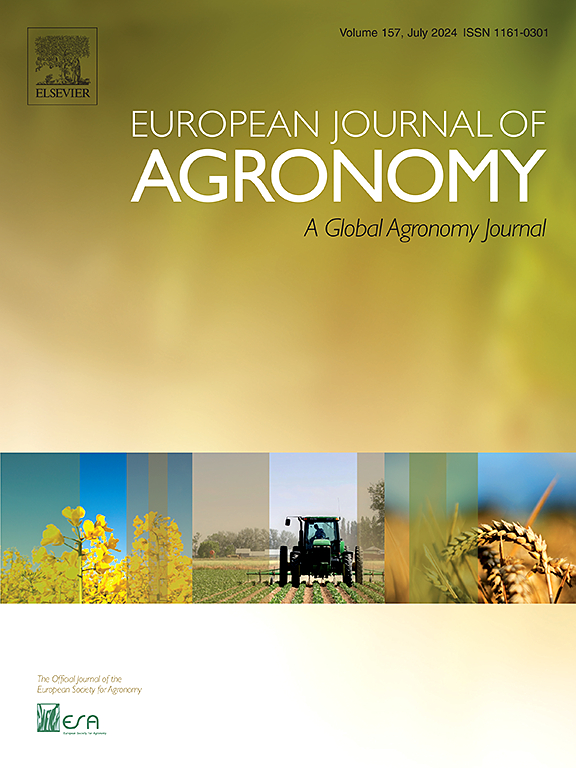A new dataset to elucidate inaccurate temperature thresholds masking a hidden source of risk uncertainties in common wheat
IF 4.5
1区 农林科学
Q1 AGRONOMY
引用次数: 0
Abstract
Temperatures outside the optimum range for each phenological phase may wreak cereal yield losses. However, there is no consensus on temperature thresholds for assessing thermal stress in wheat. The wide spread use of these thresholds in the scientific literature is hardly ever considered in climate risk assessments. Our review updates the seminal work of Porter and Gawith (1999) by revising thermal stress thresholds, according to the geographical localisation, wheat type, phenological phases and processes involved. A group of 122 publications on the impact of temperature on wheat crops reveals high variability and inconsistencies in the thresholds. We disentangle some of the factors generating this variability and show that when the sample is filtered by geographical localisation, type of common wheat (winter or spring), and biological process (growth or development), the variability decreases within a range of 35–65 % depending on the stress indicator. This variability leads to considerable uncertainty in the estimation of agroclimatic risks to wheat crops. Indeed, a 2°C difference in the stress threshold (25°C vs. 27°C) for the grain-filling phase reduced the heat stress risk (number of days above the threshold) by up to 45 % on average over a 30-year period in France. These results help interpret previous studies by considering how the chosen threshold position within the range of possible values may lead to under or overestimation. We provide the full database from this review, including metadata defining the validity range of each study’s threshold. We recommend that future studies avoid deterministic thresholds and instead use a range of values to capture uncertainty and minimize conflicting conclusions.
求助全文
约1分钟内获得全文
求助全文
来源期刊

European Journal of Agronomy
农林科学-农艺学
CiteScore
8.30
自引率
7.70%
发文量
187
审稿时长
4.5 months
期刊介绍:
The European Journal of Agronomy, the official journal of the European Society for Agronomy, publishes original research papers reporting experimental and theoretical contributions to field-based agronomy and crop science. The journal will consider research at the field level for agricultural, horticultural and tree crops, that uses comprehensive and explanatory approaches. The EJA covers the following topics:
crop physiology
crop production and management including irrigation, fertilization and soil management
agroclimatology and modelling
plant-soil relationships
crop quality and post-harvest physiology
farming and cropping systems
agroecosystems and the environment
crop-weed interactions and management
organic farming
horticultural crops
papers from the European Society for Agronomy bi-annual meetings
In determining the suitability of submitted articles for publication, particular scrutiny is placed on the degree of novelty and significance of the research and the extent to which it adds to existing knowledge in agronomy.
 求助内容:
求助内容: 应助结果提醒方式:
应助结果提醒方式:


